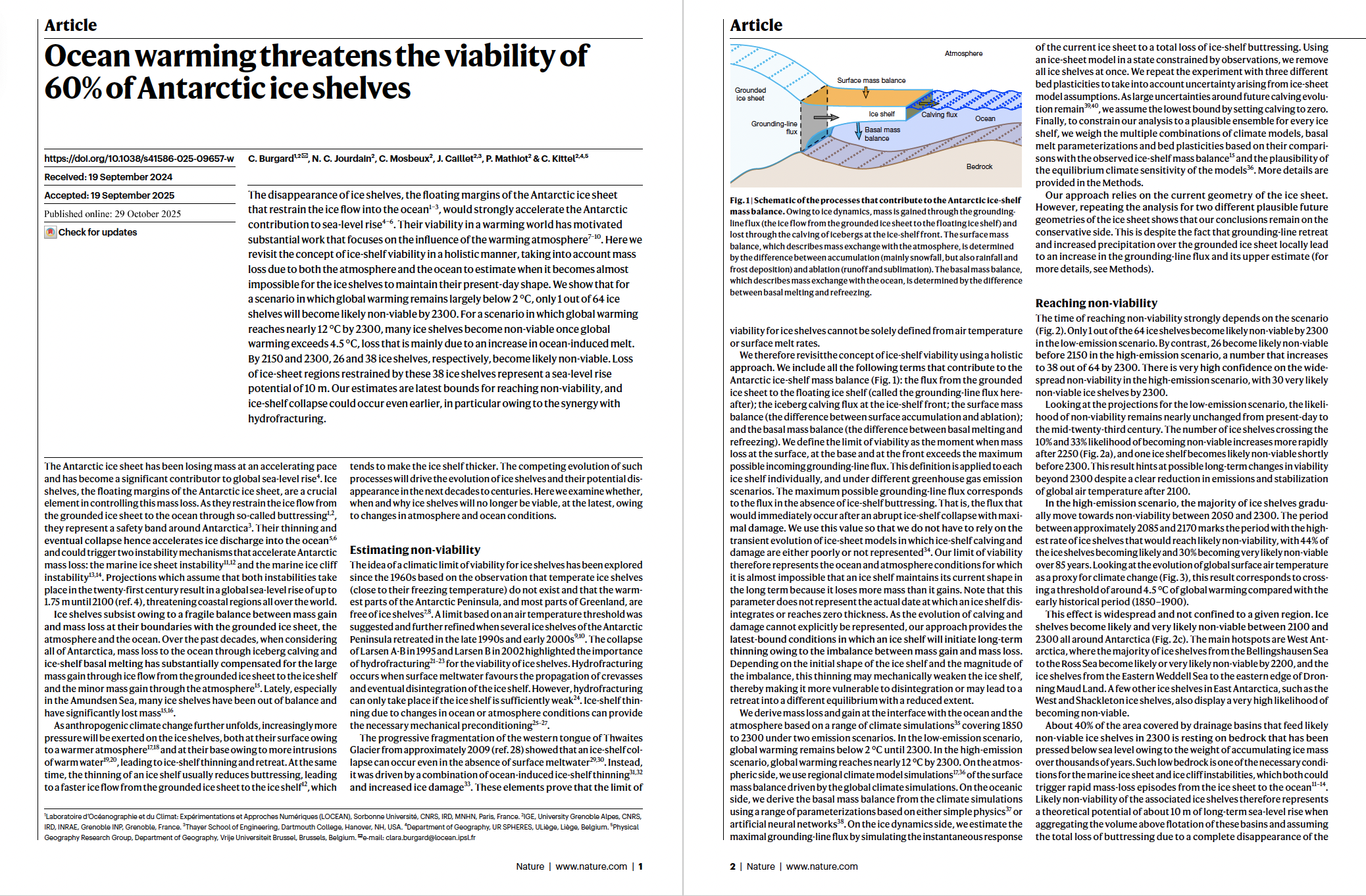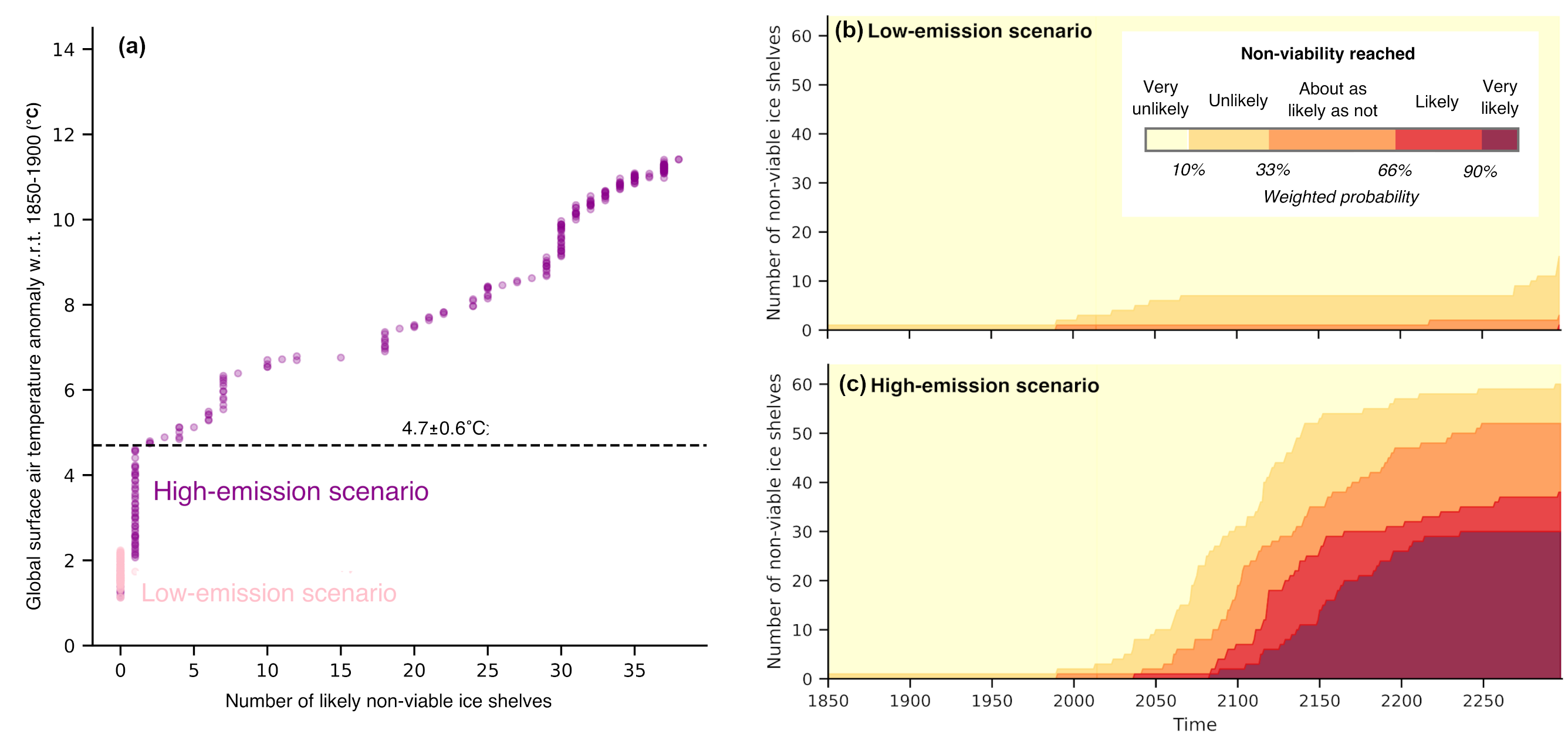Ocean warming threatens the viability of 60% of Antarctic ice shelves
A wonderful collaboration with talented early career researchers in Grenoble (Les Plateformistes) has led to a new publication in Nature.

Reference
Burgard, C., Jourdain, N. C., Mosbeux, C., Caillet, J., Mathiot, P., Kittel, C. (2025). Ocean warming threatens the viability of 60% of Antarctic ice shelves. Nature, 647, 102–108. doi:10.1038/s41586-025-09657-w
A summary can also be found in Nature Briefing: doi:10.1038/d41586-025-03581-9
Summary
We estimated dates, in given anthropogenic emission scenarios, beyond which individual ice shelves can no longer exist as we know them. We took into account all uncertainties related to the future of the ice, atmosphere, and ocean, including deep uncertainties about poorly understood processes such as ice fracturing and calving.

Number of non-viable ice shelves as a function of (a) global air temperatures, (b) time in a low-emission scenario (pink in panel a), and (c) time in a high emission scenario (purple in panel a). The colors in panels b and c indicate the probability of non-viability to be reached. The calculation of this probability was done in a way to give more weight to realizations close to available observations.
My personnal comments on this article
1- Our high end is based on the SSP585 scenario which was the only one available until 2300 in CMIP6, but according to the reduced-complexity models used in IPCC-AR6, the SSP370 scenario should also cross the limit beyond which most ice shelves become non-viable.
2- What does it mean that most ice shelves are NOT non-viable in SSP126? It means that given the uncertainty on the evolution of ice damage, iceberg calving, basal melting, and surface mass balance, there is still some probability that ice shelves keep their current extent for several centuries.
3- The dates of non-viability in SSP585 may seem very far away given the ongoing changes and extreme projected warming, but this is when we are very confident that there is no way that ice shelves remain stable given the deep uncertainty on many processes. The actual break-up should occur before.
4- Ongoing research and more observations should allow refining these estimates in the coming years. Hopefully, the community will be able to project the fate of ice shelves, their melting, fracturing, calving, and climatic feedbacks, before Antarctica becomes like Greenland
5- That ice shelves prone to marine ice-sheet instability (PIG, Thwaites, Totten, Moscow University) don’t become likely non-viable by 2300 may seem surprising. This is due to temporary increase in grounding line flux when ice shelf weakens and to our conservative assumptions for calving and fracturing.
In the Media
These results have been reported in Le Monde by Lea Sanchez, here in French or here in English
Funding
This research was made possible thanks to a perfect alignment of circumstances in terms of project funding: UGA-IRGA, PEPR-TRACCS, ANR-AIAI, EU-PROTECT, EU-OCEAN:ICE, EU-CRiceS and by the long-term support of CNRS-INSU, UGA-OSUG and IGE.